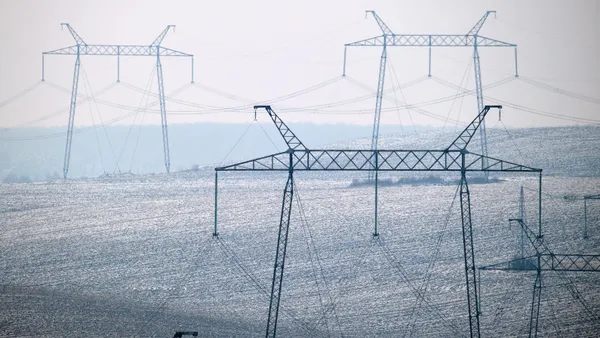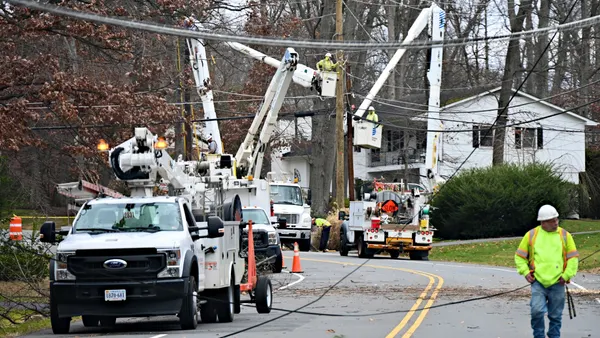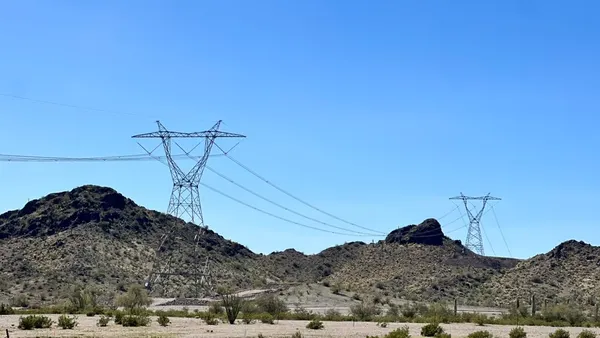If you’re from New England like I am, you might be familiar with this phrase: “You can’t get there from here.” Urban Dictionary defines it as 1) The place is remote and the route is hard to describe, or 2) The problem cannot be solved.
Sounds kind of like where utilities sit today, doesn’t it?
Your regulated monopoly is threatened by burgeoning distributed generation and growing competition. The falling price of solar and energy storage means that somewhere in the not-too-distant future, homeowners and businesses alike may well be able to affordably go off-grid — or at least reduce their consumption so greatly as to break your business model.
Meanwhile, technological advances like artificial intelligence, distributed intelligence, the cloud, robotics, virtual reality, etc., all have the potential to disrupt your modus operandi.These advances will make power generation and distribution smarter and more efficient — but they will also bring with them a competitive environment that is both very different and vastly more crowded that what utilities experience today.
Smart Grid vs. Neural Grid
The energy cloud and its component platforms
The Neural Grid is one of several platforms identified by Navigant as underpinning the Energy Cloud, which in turn defines a highly distributed, networked and dynamic energy environment. In the Energy Cloud, multiple interrelated platforms connect end users to a diverse set of products and services, with grid-sourced power provision just one of several value streams.
The Energy Cloud is already forming, fueled by technological advancement, falling costs, changes in customer demand and regulatory shifts. Navigant has defined seven overlapping and interlocking platforms which will support the Energy Cloud:
What is the Neural Grid Platform?
Navigant Research defines the Neural Grid platform as an autonomous grid leveraging artificial intelligence (AI), connectivity, the cloud, robotics, and sensing technologies across grid and non-grid energy assets. The Neural Grid supports ubiquitous automation, self-healing, seamless DER integration, customer engagement, and ultimately, the integration of dispersed markets for transactive energy.
The Neural Grid ecosystem can be thought of in terms of both emerging and evolving technologies, products and services that can be grouped into four component categories: infrastructure, end-user devices, and applications and services, all of which are layered on top of enabling technologies:
- Enabling technologies: Computing and connectivity enable the Neural Grid. The rise of powerful, affordable computing — from tiny distributed devices to the cloud — combined with a wide range of connectivity options, also increasingly affordable, are powering massive transformation across all industrial verticals. In the coming decades, 5G networks in particular may provide a powerful backbone for Neural Grid applications.
- Infrastructure: In the energy sector, enabling technologies have given rise to Smart Grid 1.0 applications for grid infrastructure such as smart metering and real-time monitoring and management of transmission and distribution (T&D) substations or solar and wind farms. Going forward, smart, multifunction infrastructure replaces the electromechanical devices of the past with assets that gather and process data and share it in the cloud for a multitude of use cases, in addition to performing their legacy functions. Smart infrastructure combines previously separate assets into more efficient, multipurpose forms, such as utility poles which provide multifunctionality like lighting, air quality sensors, communications cell sites or digital display technologies, among many others.
Smart infrastructure, combined with other Neural Grid platform elements and seamlessly integrated DER will ease the path to going off-grid. They will also enable new applications and services that leverage their geographic pervasiveness, established rights of way, and the massive amount of data collected by each asset.
- End-user devices: End users will have a growing number of touchpoints — devices or interfaces — they use to interact with their energy usage, services and providers. These smart end-user devices will include smart meters, appliances, EV charging infrastructure, smartphones and more.
- Applications and services: Standards and the ubiquity of smart infrastructure and elegant, plug-and-play end-user devices will give rise to a plethora of applications and services — both energy and non-energy related and designed for both consumers and enterprises.
The interplay of smart infrastructure, end-user devices, and applications and services, all of which arise on the back of next-generation computing and connectivity technologies, is what takes the smart grid of today into the Neural Grid future. It will be adaptive — in real time — and leverage AI in the cloud to perform not only the functions of today’s electric utility, but also many, many more. The perfect storm of technology availability, affordability and usability hasn’t formed in the utility vertical yet — but it will.
A perfect storm displaces incumbents
It hasn’t been that long since a similar combination of enabling technology, infrastructure, elegant end-user devices and boundless new applications displaced a century-old, monopoly business. The cellular telephone business, just one decade ago, was mostly about voice communications and texting. Then came the iPhone and the App Store (2007) and 4G LTE networks (in 2010). Incumbent landline telephone companies never saw what happened next coming — although they should have.
Throughout the 2000s many telcos thought consolidation was the answer. This trend culminated with CenturyLink’s massive $22 billion buy of Qwest. That deal was announced in 2010 and CenturyLink has lost more than half its market cap since then. Meanwhile, the mobile platform of today is not only a phone, it’s a video screen, an ATM, a radio, an email platform, a social media platform and so much more. And the public values of Verizon and AT&T — which started unloading their landline business more than a decade ago — have gone up about 100% and 50%, respectively, over the same timeframe.
Utilities in the Neural Grid future will need to be just as creative and engaged in outside-the-box thinking if they want to maintain dominance in the energy ecosystem. New business models will need to be created. Luckily, the many enabling technologies described above should help them to do so — as long as they recognize the opportunity and grab it before the Googles or Verizons or Exxons of the world do.
When the prices, availability and usability of the technologies align, change can happen rapidly. Being ready for that radical change is how you get there from here.
(An in-depth discussion of the Neural Grid platform, enabling technologies and the mobile example can be found in Navigant’s new white paper, “From Smart Grid to Neural Grid: Industry Transformation and the Top 5 Technologies to Bring the Grid into the Cloud.”)
Richelle Elberg is a principal research analyst at Navigant Research.












